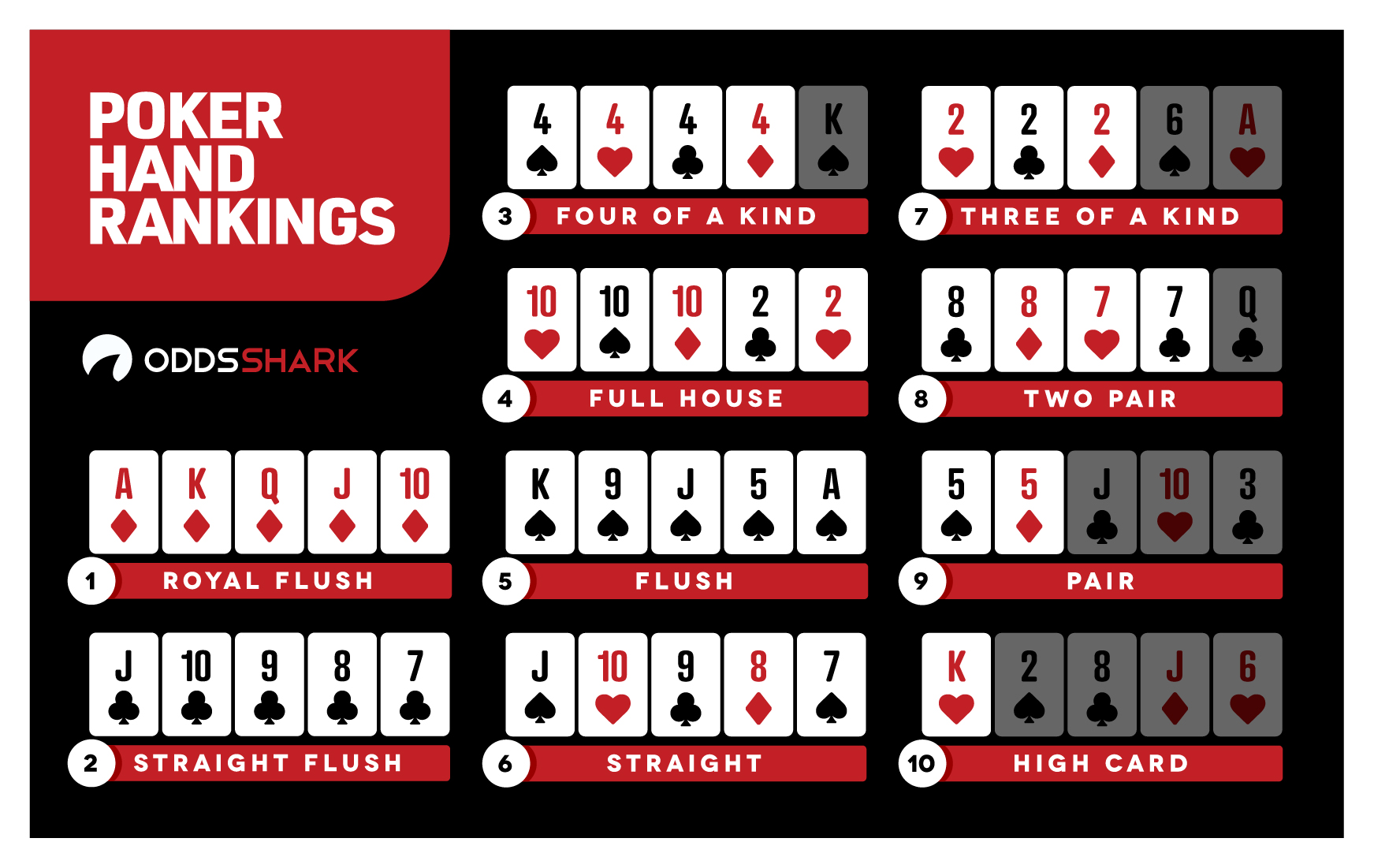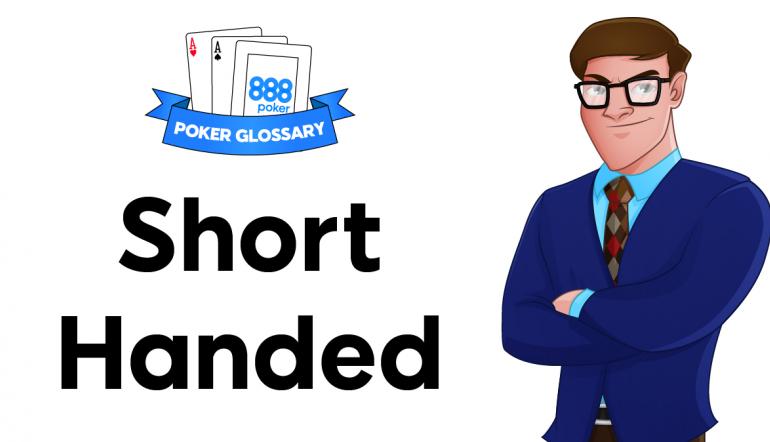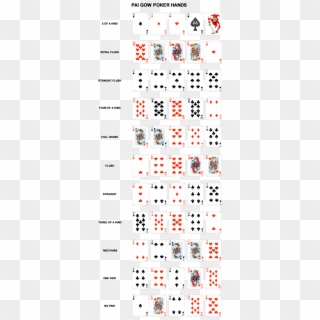Shorthand Poker Hands
Poker Etiquette A final mistake I see on the table is players no obeying poker the unwritten rules of poker. Here are some of the rules you will want to watch out for: Don’t talk to someone while they are in hand. When a player is in a hand they need to concentrate and they will not appreciate you trying to maintain a conversation with them.
This poker lesson is not going to suggest you take a notepad to your local card room and jot down all of the action you witness. Taking a spiral notebook to the brick and mortar felts isn’t very practical and you’ll probably get laughed out of card room. However, the online version of our fair game is ideal for taking notes on players and the tendencies they exhibit at the table.
The ability to create notes on the players you encounter is an inbuilt feature on practically every online poker site, yet one could wager that the vast majority of online poker players today do not take advantage of it. Most poker players either rely on a good memory or don’t even change their play based on their opponents. In poker, one of the largest sources of our profits comes from taking advantage of other’s mistakes. By taking good notes you’ll be able to track opponents who have made mistakes in the past and you might even be fortunate enough to see when your opponents make those same mistakes again.
As far as poker hands go, it doesn’t get better than a Royal Flush! It consists of the following hand: 10-Jack-Queen-King-Ace. All the cards must be the same suit. It is a Straight Flush with all the Royals and an Ace, and no other hand can beat this. For example, X9 is all non-pair hands where the kicker is at least a 9. This would include K9s+, Q9s+, J9s+, T9s+, T9s, K9o+, Q9o+, J9o+, T9o+, and T9o+. XJT means all hands with an unsuited kicker Jack or better and all suited hands with a Ten kicker or better. So 55+, ATs+, ATo+, KTs+, KJo+, QTs+, QJo, JTs.
- Shorthanded poker is played with six or less players at the table, making it necessary to give more action than you would in full-ring poker and forcing you to play more hands in order to win. It is a fun and exciting way to play and many of the top online winners excel at short-handed play.
- Poker has a problem. Short-Deck is the answer. Also known as, Triton Hold’em, Short-Deck has its roots in Asia, where successful businessmen, and poker lovers, Paul Phua and Richard Yong, experimented by removing a few cards from the standard 52-card deck, increasing the likelihood of strong pre-flop hands. Out went the 2s.
Tracking how your opponents play in certain situations is undeniably profitable in the long run. There are also additional benefits of getting into the habit of taking notes. Preventing boredom is a key reason. Proper note taking will keep you focused on the flow of the game. You may even feel more confident since the added information you gain on your opponents will result in better decisions. The activity of note taking may also reduce the chances of you going on tilt, since you’ll be more concerned with the quality of your decisions.
Proper Note Taking
Now that you know that taking notes is important, how should you go about it? Here are some of the things that you should try to keep in mind when taking notes.
Blind level, Stack Size and Position
Taking notes about the blinds levels is obviously not applicable to cash games, but it’s very important in tournament play. A player can change his play depending on how early the game is (blind level), how many chips he has (stack size) and what seat he is in (position). An example of a note might look like this; “25/50 (1500) CO” or “UTG 30BB 50-100”, whatever order or syntax works best for you.
Devil in the Details

Avoid being general with your note taking. Writing “raised with queens” isn’t very helpful. Along with the information suggested above, you should also record the sizes of a player’s bet. You will often find a pattern that can reveal the strength of your opponent’s hand just by the way he sizes his bets with certain hands and situations. A note might look like “75/150 (3200) UTG 3x = QQ”, which would mean that this player raised three times the big blind sitting under-the-gun with pocket queens. If later you get a note like “75/150 (3300) UTG 2x = KTs”, meaning he raised only two times the big blind with king-ten suited in a similar situation, you might be able to take advantage of this information at a later time with an appropriate move.
Color Codes and Icons

Many online sites have some sort of color or icon system that can allow you to easily mark a player. Take advantage of this feature if it’s available because it will give you a quick indication of how someone plays based or prior observations. When using colors it can be helpful to go with the “stoplight” system, using green on weak players, yellow on more accomplished ones and red to mark the serious grinders and solid poker players. You can use other colors or icons to notate other types of players as you see fit – whatever works best for you.
Condense Your Notes
If you play a lot, eventually you’ll have a sea of notes to go through on many of the regulars you encounter. After a while you can slim down your information. If you have plenty of notes on how a player sizes his bets, just make a short note to that fact. A simple note like “Pre-flop: 3x is strong, 2x is weak” can eliminate a bunch of clutter in your note box for that player.
Keep up with the Game
Never miss what is actually going on in the game, especially when it is your turn. If you spot something noteworthy but are facing a situation that requires your full attention, play the hand. The note taking can wait. Make use of the hand history feature provided by the poker room and go back and review any past hands that you might have missed. Using shorthand while taking notes can be very helpful and later in this lesson will provide some examples you can use.
Just the Facts, Ma’am
Just jotting down “FISH” or “%@&*!^# suck out artist that can’t fold!” isn’t going to help you very much when you see that player again. As much as that bad beat might have hurt be sure to get any information you can out of the hand and move on. That one note might help you avoid a similar fate in the future.
Post-flop and Showdowns
Note taking is for any situation. Pay close attention to how someone plays their draws, their nut hands and their top pairs. Did they trap? Did they check-raise? Did they make a value bet that was smaller than usual? Also be sure to watch out for any hands that have a showdown, even if you were not involved in the hand. Showdowns provide vital information and you’ll often be able to pick up a clue or two on how your opponents play. Take advantage!
Shorthand / Abbreviations for Note Taking
When taking notes it’s best to try and use simple abbreviations. A quick two- or three-letter acronym is quick and easy to translate. Let’s start by looking at abbreviations for position:
Positional Notes
- BB = Big Blind
- SB = Small Blind
- B or BU = Button
- CO or B-1 or 1o = The cutoff or one seat off the button
- HJ or B-2 or 2o = Hijack or two seats off the button
- B-3 or 3o, etc = Notes how far off the button
- UTG = Under the gun, or first to act pre-flop.
Note: If the table isn’t full then be careful when using UTG. While it is important to know when the player was first to act, noting his relative position in regards to a short-handed table is key as well, especially for SNG players. You might use “UTG 3o” or “UTG 6H” to tell you that this was at a six-handed table.
Pre-flop Notes
Please be aware that many of the pre-flop abbreviations that follow are tailored to SNG and tournaments rather than cash games.
- #x = The size of the raise in relation to the big blind. “3x” would be three-times the big blind.
- HBL = High Blind Limp, which is used by Colin Moshman in his SNG books. This is when a player limps when they have less than 25 big blinds in their stack.
- LBL = Low Blind Limp. When a player limps in when they have more than 25 big blinds in their stack.
- OL = Over Limp. This player limped behind others. This can also be written as HBOL (High Blind Over Limp) or LBOL (Low Blind Over Limp) as well.
- HBMR = High Blind Min-Raise. Like HBL, but the player elected to use a min-raise instead. This can be used as a substitute for 2x since it may stand out more in your notes.
- LBMR = Low Blind Min-Raise. Like LBL, but the player elected to use a min-raise instead.
- FE = Fold Equity. This can be used for tournament notes to indicate a situation where you determine that fold equity was a contributing factor.
- AI = All In. Use this anytime a player bets all of his remaining chips. You could also use a short term like “push” or “shove”.
- AIPF = All-in Pre-flop. This is the same as AI except the action was taken pre-flop.
- PM = Pot Mash. This is when a player bets the pot, usually hitting a button in the software instead of typing out a numbered bet. This can be a bet-sizing tell for some situations.
- FSS or CSS = Flat (Call) Shorty Shove. When a short stack goes all-in and a player called rather than raised over him.
- SSS = Shoved over Shorty Shove. A player elected to go all-in as opposed to just calling a short stack’s all in move.
- RSS = Raised over Shorty Shove. Like SSS except the player made a raise that was less than all-in.
- MRSS = Min-Raised over Shorty Shove. This is the same as RSS but the player specifically made a min-raise over the short all-in.
- r### = raised to an exact number of chips, “r333” would mean this player made a raise of 333 chips.
Post-Flop Notes
Here are some abbreviations that you can use in your notes for many post-flop situations, in both cash games and tournament play.
- b### = Bet an exact number of chips.
- CB = Continuation Bet. This can be followed by a number or a fraction of the pot.
- BRR = Bets aRe Real. This means that when he bets he has a hand and is not bluffing.
- RRR = Raises aRe Real. This means the player always raises with his good hands, not as a bluff or semi-bluff.
- POB = Post Oak Bluff. This term was originally used by Doyle Bronson. It is often referred to as a “donk bet”, and “probe bet” is also used. This is used to note a weak lead or min-bet from out of position into a pre-flop raiser. It can be a bet-sizing tell that usually means the player is weak or trying to see a draw cheaply.
- TES = Top End Shover. This player only goes all-in when he has the goods.
- TEC = Top End Caller. This is a player with a tight calling range.
- CFC = Can’t Fold a Chair. This is a calling station or someone who just doesn’t fold in situations that most players should.
- BAM = Bad At Math. This is used when a player is seen folding despite getting very favorable odds to call.

Other Abbreviations for Your Notes
The following abbreviations are probably obvious to you already, but we’ll include them just in case they’re not.
- ## = a pocket pair, (e.g. 33 would be pocket threes).
- TT = a pocket pair of tens.
- AA, KK , QQ, JJ = pocket Aces, Kings, Queens, Jacks.
- KTs = King-Ten suited.
- QJo = Queen-Jack offsuit.
- A7s = Ace-Seven suited.
- 76o = Seven-Six offsuit.
- SC = Suited Connector.
- AX = any hand with an Ace in it.
Note Taking Examples
Suppose you’re playing in a tournament and you saw a player limp in with pocket fours from the button. He had 2,400 chips and the blinds were 30/60:
Here are two notes you could make about to describe this play:
Let’s suppose you saw a player raises four times the big blind at 50/100 from the hijack seat with a 1600-chip stack. The showdown revealed he did this with Queen-Jack suited:
Either of the following notes could be made to describe this play:
Let’s look at one more situation. In this example the small blind started a hand with 2,250 and shoved all-in pre-flop with Ace-King offsuit when the blinds were at 75/150, with an ante of 10 chips:

The following two notes could be made to describe this play:
Shorthand Poker Hands Meaning
Conclusion
Having as much information on as many of your opponents as possible will definitely benefit you as an online poker player. While you might not want to take a spiral notebook to the casino with you, there is no reason why you shouldn’t take advantage of the note taking features included in the software by the online poker rooms. Knowledge is power, so make sure you are the one that possesses this power and start taking notes today!
Related Lessons
By Rick 'RyckyRych' Perlini
Shorthand Poker Hands Games
Rick has been playing poker since 2007 and is a low-stakes online SNG specialist. He has been a highly active and well-respected member of the Pokerology community for several years.
Related Articles
Putting an Opponent on a Range of Hands
Texas Holdem – Playing the Short Stack
Texas Holdem Poker Strategy – Playing the Turn Card
Intermediate Poker Strategy – Short Handed Limit Texas Holdem
A short handed poker game is one in which you play against six or less than six players. Playing this game can be advantageous especially when you are new to poker, as it has few players. The lesser the number of players, the better are your chances of winning. One aspect that can enhance this possibility is – knowing a few strategies. Here are some of them:
Deciding what games to be played
A key skill to develop when playing short handed limit poker is being able to determine the games to play. Firstly, it is advisable to not play against professionals if you are still developing your poker skills. Secondly, examine the way opponents are playing. To do this, you will have to observe two key aspects: the amount of betting and raising that each player engages in. Thirdly, determine whether you should enter a game or not. If players are consistently folding and raising, it is best to not join. On the other hand, if they appear to be limping to the pre-flop, you can enter the game. These are passive players and going up against them can be beneficial in a short-hand limit game as your chances of winning are high.
Starting hands at the pre-flop

When you play a game of short handed poker, there are a few hands that can be more advantageous than others. Some of the hands that you can raise are pocket pairs, JT, QJ, AT+, KJ and KQ. You can call a raise with these hands – QJ, AJ, KJ, KQ, high value pocket pairs and AT (sometimes). Small pairs and suited connectors should be played only in a few situations. You may be able to limp with it into a multi-way pot if the players are not aggressive. If the number of players is less than four, the game will not have a multi-way pot. In such a situation, a suited connector will have little strength. When the game has very few players, play heads-up pot if you have a small pair.
Hand values are relative; however, the key aspect that determines this is their strength. Another aspect that can influence it is the amount of action in the game. For instance, even with good hands, it is best to fold if a lot of action has already taken place. Retain only AA, JJ, QQ and KK in such a situation.
Estimating outs
At every point in the game, be aware of the number of cards that can make a winning hand for you. These are known as outs. Ensure that your estimates of odds for outs are less than that possible. For instance, in a situation where you have an ace and queen as pocket pairs, and the board has king, queen and ten, it is best to not count the ace as an out. This is because, an opponent could have a jack or AK.
If you are a beginner in poker, mastering how to play short-hand limit Texas Holdem can be advantageous. This is because, most of the key concepts used in short handed Texas Holdem are used in long-hand poker pre-flop.